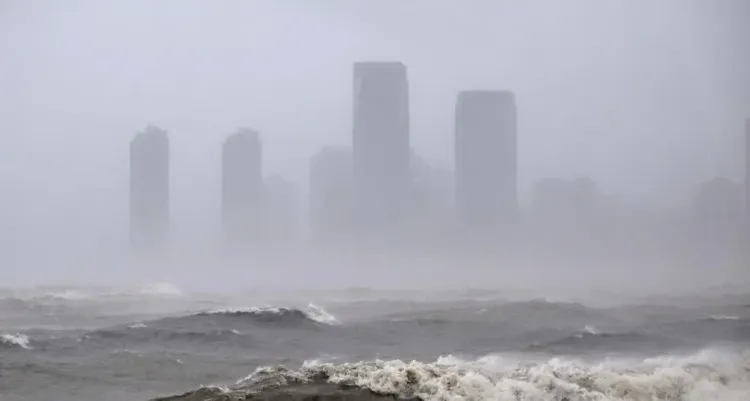What triggered China's emergency response for flooding in Yunnan?

Synopsis
Key Takeaways
- China has initiated a Level-IV emergency response for flooding in Yunnan.
- Typhoon Matmo is expected to bring heavy rainfall of up to 190 mm.
- Emergency teams are actively responding to power outages and damage assessments.
- Significant evacuations have occurred due to the typhoon's impact.
- The link between climate change and extreme weather is becoming more evident.
Beijing, Oct 6 (NationPress) The State Flood Control and Drought Relief Headquarters of China has initiated a Level-IV emergency response for flood management in the southwestern province of Yunnan on Monday.
A dedicated team has been sent to assist and oversee flood prevention measures.
Meteorological forecasts indicate that certain regions of Yunnan are poised for significant rainfall in the upcoming days, driven by the effects of Typhoon Matmo, the 21st named storm of the 2025 Pacific typhoon season, with some locales possibly experiencing torrential rains of up to 190 mm.
China's emergency response framework comprises four levels, with Level I being the most critical, as reported by Xinhua news agency.
Previously, on October 5, Typhoon Matmo made landfall on the eastern shore of Xuwen County, located in Zhanjiang City, within southern Guangdong Province, according to the local meteorological service.
The typhoon struck with maximum wind speeds near its core, reaching 42 meters per second and a minimum central pressure of 965 hectopascals.
This storm caused significant damage to the power grids in Suixi County of Zhanjiang, resulting in power outages across parts of the county. Emergency response teams were rapidly deployed to evaluate the impacts and commence repairs.
As of 7 p.m. on Sunday, nearly 40,000 emergency personnel, approximately 170 emergency power vehicles, and 550 emergency generators were mobilized by the Guangdong branch of China Southern Power Grid to assist the affected regions.
Meteorological officials report that the typhoon continues its northwest trajectory. They anticipate that Zhanjiang and the adjacent Maoming City will experience moderate rain evolving into showers on Monday.
State media reported that hundreds of thousands of individuals were evacuated from their residences as Typhoon Matmo battered the southern coast of China on Sunday.
China holds the title of the world's leading greenhouse gas emitter, a factor that scientists assert is amplifying climate change and contributing to the increasing frequency and severity of extreme weather events.










